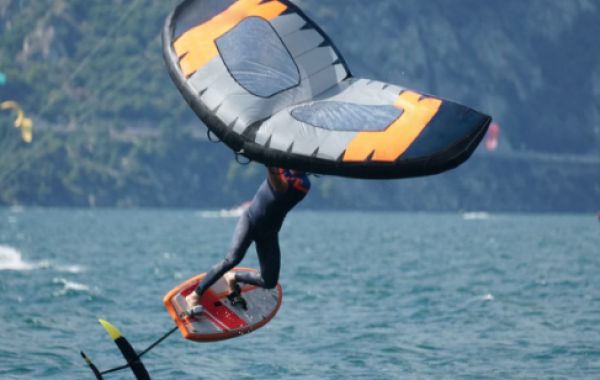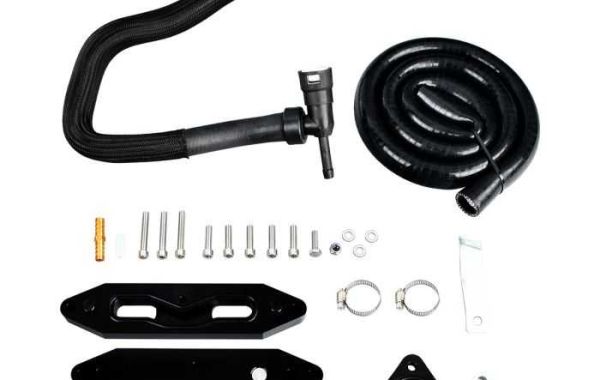From the serene coasts of California to the windy beaches of Tarifa, Spain, this exhilarating activity is captivating thrill-seekers and water sports aficionados alike. But what exactly is wing foiling, and why has it captured the imagination of so many? Let's dive into the world of wing foiling to uncover its secrets.
Introduction to Wing Foiling
Wing foiling combines elements of windsurfing, kiteboarding, and stand-up paddleboarding (SUP) with the innovative addition of a handheld wing. Riders stand on a foil board, similar to a surfboard but equipped with a hydrofoil that lifts the board above the water's surface. By harnessing the wind's power with the wing, riders glide effortlessly across the water, performing maneuvers that defy gravity.
The History of Wing Foiling
Wing foiling has its roots in the surfing and windsurfing communities, with early prototypes dating back to the 1980s. However, it wasn't until recent advancements in foil technology and wing design that wing foiling became accessible to the masses. Today, it's not uncommon to see riders of all ages and skill levels taking to the water with wings in hand.
What Makes Wing Foiling Unique?
How It Differs from Traditional Surfing and Windsurfing
Unlike traditional surfing, which relies solely on waves for propulsion, wing foiling harnesses the power of the wind, allowing riders to glide effortlessly across flat water or ride ocean swells. Similarly, while windsurfing requires a sail attached to a mast, wing foiling offers greater freedom of movement with a handheld wing.
The Rising Popularity of Wing Foiling
Wing foiling's surge in popularity can be attributed to several key factors.
Social Media Influence
Platforms like Instagram and YouTube have played a significant role in showcasing the thrill and beauty of wing foiling to a global audience. Stunning aerial footage and adrenaline-fueled tricks shared by professional riders have inspired countless individuals to try their hand at wing foiling.
Accessibility and Learning Curve
Compared to other water sports like kiteboarding or surfing, wing foiling has a relatively low barrier to entry. With the right equipment and instruction, beginners can experience the sensation of flying over water in a matter of hours, fueling a surge in participation worldwide.
Versatility in Different Conditions
One of wing foiling's greatest appeals is its adaptability to various wind and water conditions. Whether it's a light breeze on a tranquil lake or gale-force winds on the open ocean, wing foilers can find joy and excitement in almost any environment.
Benefits of Wing Foiling
Full-body Workout
Wing foiling engages muscles throughout the body, providing an excellent cardiovascular workout while improving balance and coordination.
Connection with Nature
Riding silently across the water, powered only by wind and wave, fosters a profound connection with nature that few other sports can match.
Minimal Gear Requirements
Unlike traditional sailing or kiteboarding, wing foiling requires minimal gear, making it accessible to a wide range of individuals.
Environmental Impact and Sustainability
Eco-friendly Aspects of Wing Foiling
With no noisy engines or harmful emissions, wing foiling is a remarkably eco-friendly way to enjoy the water, minimizing disruption to marine life and coastal ecosystems.
Wing Foiling Communities and Events
Wing foiling communities are springing up around the world, organizing events, competitions, and group outings to share knowledge and foster camaraderie among enthusiasts.
Wing Foiling Gear and Equipment
Essential Gear for Beginners
Beginners can start with a foil board, wing, and harness, gradually adding accessories like helmets and impact vests as they progress.
Advanced Equipment and Customizations
Advanced riders may invest in specialized foil setups and custom wings tailored to their riding style and preferences.
Learning Wing Foiling
Tips for Beginners
- Start in light winds and calm waters to build confidence and control.
- Practice controlling the wing on land before attempting to ride.
- Focus on maintaining a stable stance and using subtle shifts in body weight to control direction and speed.
Common Mistakes to Avoid
- Overestimating wind conditions and attempting to ride in strong gusts.
- Leaning too far back on the foil board, leading to loss of balance and potential crashes.
- Neglecting safety precautions such as wearing a leash and helmet.
Safety Considerations
Importance of Proper Instruction
Learning from experienced instructors can significantly reduce the risk of injury and accelerate skill development for aspiring wing foilers.
Weather and Conditions Awareness
Understanding weather patterns, tide movements, and local regulations is essential for safe and enjoyable wing foiling experiences.
Wing Foiling vs. Other Water Sports
Comparison with Kiteboarding and SUP Foiling
While kiteboarding offers similar thrills, wing foiling provides greater mobility and simplicity, with no need for cumbersome kite lines or inflatable kites. SUP foiling, on the other hand, lacks the dynamic maneuverability and speed potential of wing foiling.
Future Trends in Wing Foiling
As technology continues to evolve and more individuals discover the joys of wing foiling, we can expect to see innovations in gear design, safety equipment, and instructional methods, further fueling the sport's growth in the years to come.
Conclusion
Wing foiling's meteoric rise in popularity can be attributed to its accessibility, versatility, and unique blend of exhilaration and tranquility. Whether you're a seasoned water sports enthusiast or a curious beginner, wing foiling offers an unparalleled opportunity to connect with nature and experience the thrill of flight over water.








